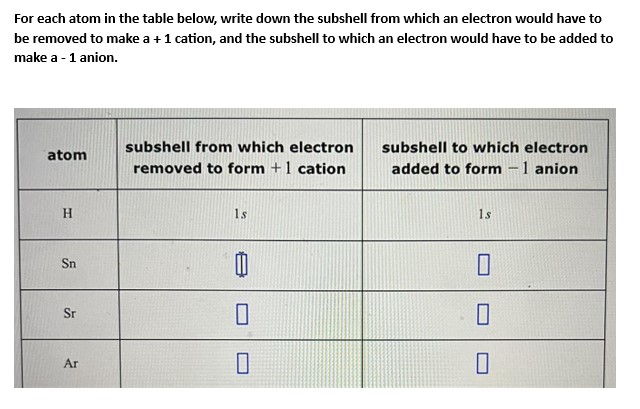QQuestionAnatomy and Physiology
QuestionAnatomy and Physiology
For each atom in the table below, write down the subshell from which an electron would have to be removed to make a + 1 cation, and the subshell to which an electron would have to be added to make a - 1 anion.
| atom | subshell from which electron removed to form + 1 cation | subshell to which electron added to form - 1 anion |
| --- | --- | --- |
| H | 1s | 1s |
| Sn | 0 | 0 |
| Sr | 0 | 0 |
| Ar | 0 | 0 |
Attachments

6 months agoReport content
Answer
Full Solution Locked
Sign in to view the complete step-by-step solution and unlock all study resources.
Step 1: For a neutral atom to form a + 1 cation, it needs to lose one electron.
This means we have to remove an electron from the subshell with the highest principal quantum number (n) that still contains electrons.
Step 2: For a neutral atom to form a - 1 anion, it needs to gain one electron.
This means we have to add an electron to the subshell with the highest principal quantum number (n) that has available space.
Final Answer
| atom | subshell from which electron removed to form + 1 cation | subshell to which electron added to form - 1 anion | | --- | --- | --- | | H | 1s | 1s | | Sn | 5p | 5p | | Sr | 5s | 5s | | Ar | 3p | 3p |
Need Help with Homework?
Stuck on a difficult problem? We've got you covered:
- Post your question or upload an image
- Get instant step-by-step solutions
- Learn from our AI and community of students